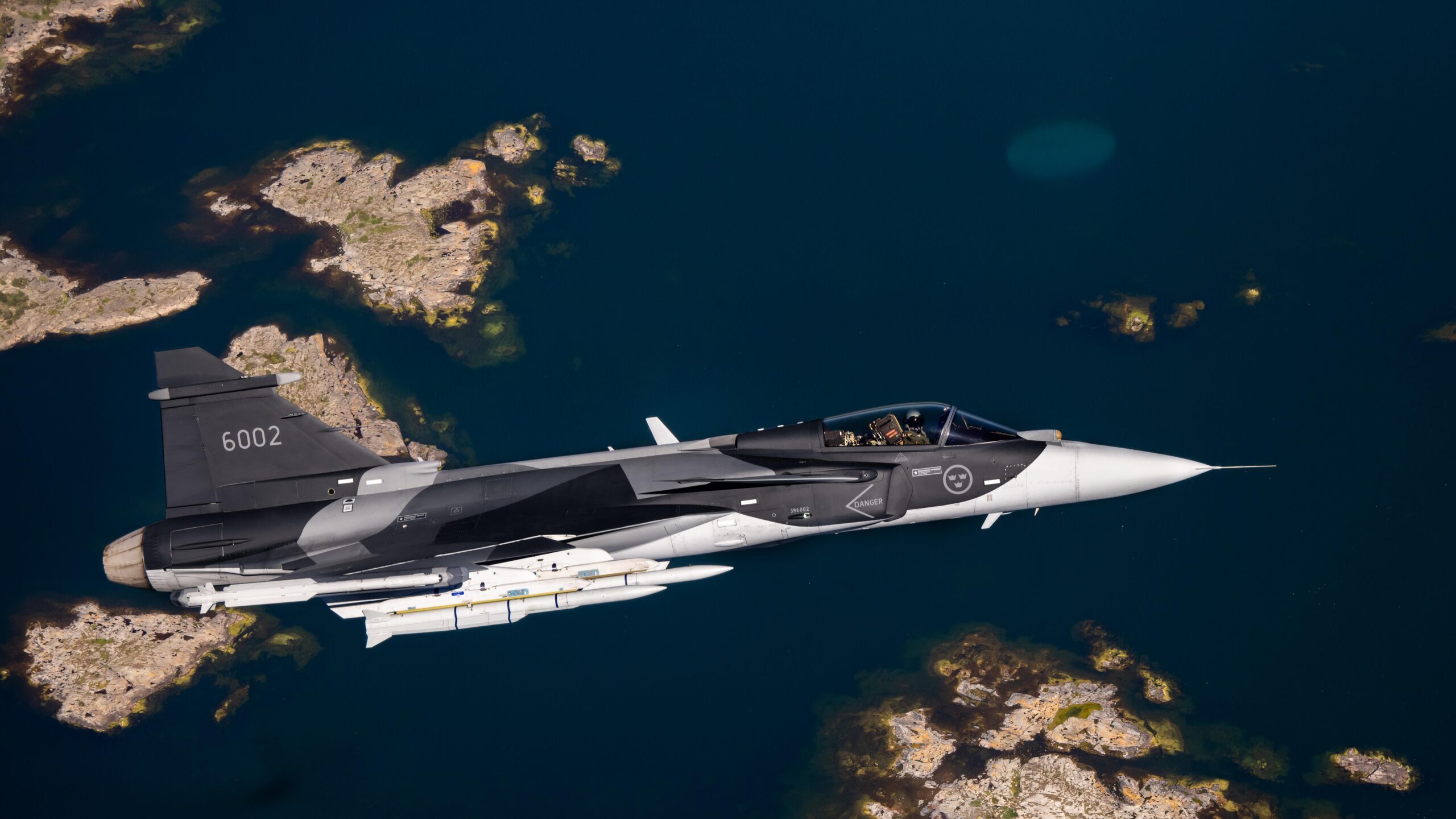
Saab’s Gripen fighter jet is the backbone of Swedish air power (Saab)
PARIS AIRSHOW — The Swedish Air Force will not rush to join either of the
two major European led sixth-generation fighter jet programs, as it continues to focus on preliminary “fact finding” activities, two senior Swedish military officials said on Sunday.
Stockholm has
so far declined to join the newly formed UK, Italian and Japanese Global Combat Air Programme (GCAP), despite signing a Memorandum of Understanding with London in 2019 on a “joint combat air development and acquisition programme.” And it doesn’t sound like any change will be forthcoming.
“We do not have an immediate need for a new fighter, which perhaps is different for other nations,” Gen. Lars Helmrich, director of air and space systems at the Swedish Defence Material Administration, said at an event hosted by the Swedish Air Force Fan Club in Paris. “We’re looking to start early [for planning purposes] and be better situated for when we need to decide on the next fighter. It’s a matter of pace.”
Stockholm has a relatively wide window to hold off on modernizing fighter capabilities, as the Swedish Air Force has agreed to procure 60
Saab Gripen E fighter jets, expected to be in service until
around 2060, much longer than the 2035 timeline for the UK-Italian-Japanese GCAP platform to enter service. A date of 2040 has also been set for the rival Franco-German-Spanish Future Combat Air System (SCAF) to begin operations.
“In terms of sixth-generation [plans], we’re doing a lot of work in different contexts and different cooperations right now, which is very important for us in trying to figure out [a decision],” said commander of the Swedish Air Force Maj. Gen. Jonas Wikman. “Right now its not a procurement program, it is a fact finding program.”
RELATED: Sweden joining UK-Japan-Italy fighter effort seen as unlikely by industry partners
He also suggested a
Gripen pilot shortage that led Swedish Air Force flight hours on the aircraft to fall annually, by nearly 12 percent, is under control and not adversely impacting operational priorities.
“We have quite a low number of pilots, and the reason for that is the retirement rate against an influx rate, which we have been aware of for a while,” he explained. “We are hoping to solve that problem before it effects our capabilities, because we have managed to keep readiness up during this period.”
Besides future fighter prospects, Wikman said that the Swedish Air Force will be “ready to act” as a NATO aligned organization once
entry to the alliance has been approved.
Turkey and Hungary continue to delay ratifying Sweden’s membership application to join NATO, despite pressure to do so from within the alliance, ahead of the Heads of State Summit in Vilnius, Lithuania, next month.
The Swedish Air Force operates a number of aircraft like the Gripen and Saab’s GlobalEye Airborne Early Warning and Control (AEW&C) platform
which are not operated by any other NATO member, potentially presenting the alliance with interoperability and capability sharing difficulties.
Wikman said that those types of issues have not been worked out.
“We’re not there yet with how all the [NATO] capabilities play out, right now we are more focused on the integration process…we are on a longer journey of five or six years to play our part in NATO,” he added.

